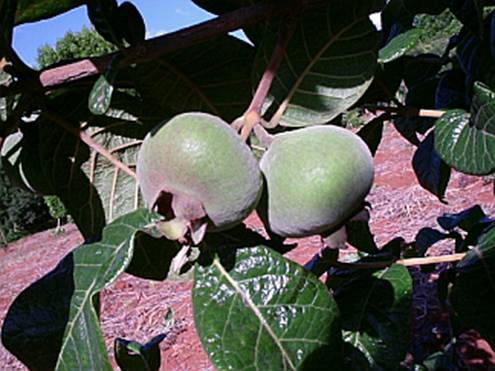CAMPOMANESIA
SCHLECHTENDALIANA
FAMILY OF MYRTACEAE
|
|
|
|
Ripening fruits |
Fruits and seeds |
NATIVE NAME: GUABIROBA comes from the indigenous language Guarani and will say "Bitter fruit". Also named as Guabiroba rugosa or Guabirova da restinga.
Origin: Occurs mainly in the forests on the sandbanks from the state of Espírito Santo to the state of São Paulo in Brazil. More informations in the Portuguese language under the link: http://floradobrasil.jbrj.gov.br/2012/index?mode=sv&group=Root_.Angiospermas_&family=Root_.Angiospermas_.Myrtaceae_&genus=Campomanesia&species=&author=&common=&occurs=1®ion=&state=&phyto=&endemic=&origin=&vegetation=&last_level=subspecies&listopt=1
Features: 4 to 8 meters tall tree with a round crown in full sun and pyramidal crown in the forest. The trunk is rotated and measures 20 to 30 cm in diameter, with a rough, brownish bark. The leaves are simple, opposite and dark green and hairy as important characteristic, are elongated with leathery texture measure, 4 to 9.5 cm long and 2.5 to 6 cm wide, with a rounded base and short tip. The ribs (8 to 15 pairs) varies on the surface. The flowers are hermaphrodite, appear in the leaf axils or in pairs on very short stems. The open flowers measure 3 to 4 cm in diameter. The open flowers measure 3 to 4 inches in diameter. The outer shell has 6 mm long and rounded sepals, the inner casing contains 5, rare 6, white petals, which are 1.8 cm long and are rounded at the base and broad at the tip.
Culture tips: Fast-growing tree that is highly resistant to 5 months of drought and frosts of -3°C. Can be planted at every altitude, where the soil is deep, with sandy or loamy structure (red earth) with neutral pH and rich in organic matter. The tree begins 3 years after planting to bear fruit.
Propagation: The seeds are dark cream-colored, round and flat. They lose their ability to germinate if they dry out completely. So it's good to sow them immediately after harvest and remove the pulp. Germination usually takes 40 to 60 days, if they are planted in the substrate, which is rich in organic material. The seedlings reach 30 cm with 6 months in culture.
Planting: Can be planted in full sun and in the forest with widely spaced trees. Dig planting holes at a spacing of 5 x 5 m, with dimensions of 50 cm of length, width and depth, give into the soil 500 g of lime, 1 kg of ash and 8 kg of organic material mixed well and leave for 2 months to act. The best planting time is from September to October. After planting water every two weeks during the first 3 months, then only when it is no raining since more than 1 month.
Culture: Formation cut of the crown and removing the shoots that grow from the base of the trunk or hinder the crown. Fertilize with organic compost, it can be 6 kg organic material to be mixed well with 30 g of NPK 10-10-10, double the amount to the fourth year, then the simple every year.
Use: Fruits from Februay to April. The fruits are consumed in nature, or can be used for the production of jellies or ice-creams. The wood is suited good for the production of music instruments and the tree can be used in gardening and landshaping.
Back to the seedlist (English) or back to Myrtaceae (Portuguese)

